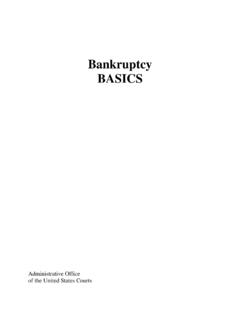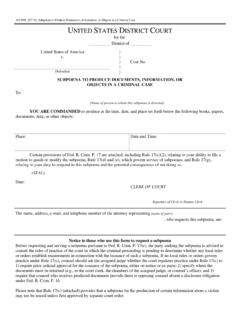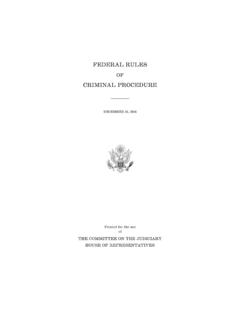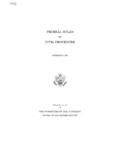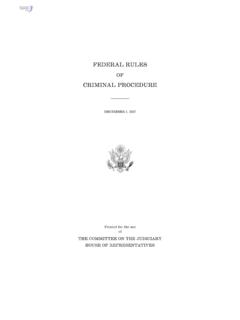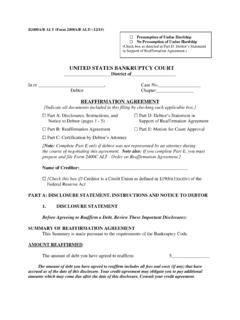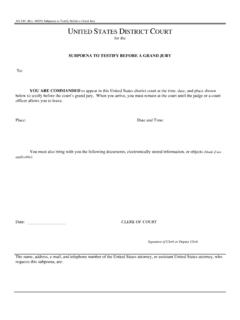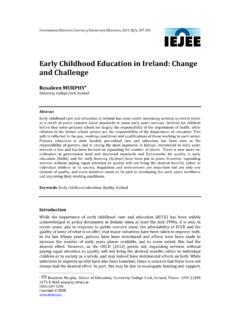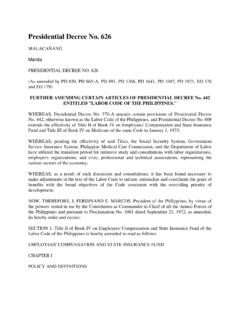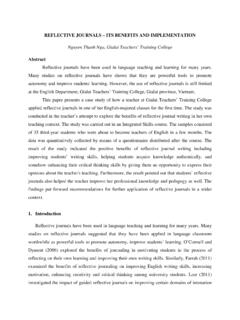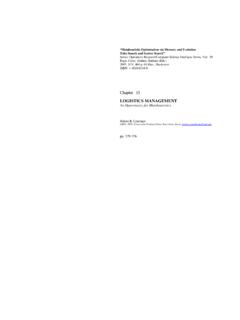Transcription of An Examination of the Impact of Criminological Theory on ...
1 15 December 2016 An Examination of the Impact of Criminological Theory on Community Corrections Practice Criminological THEORIES ABOUT why people commit crime are used and mis-used every day by legislative policy makers and community corrections managers when they develop new initiatives, sanctions, and programs; and these theories are also being applied and misapplied by line commu nity corrections officers in the workplace as they classify, supervise, counsel, and con trol offenders placed on their caseloads.
2 The purpose of this article is to provide a brief overview of the major theories of crime causa tion and then to consider the implications of these Criminological theories for current and future community corrections practice. Four distinct groups of theories will be examined: classical theories, biological theories, psy chological theories, and sociological theories of crime causation. While the underlying assumptions of classical criminology have been used to justify a wide range of sentencing and corrections policies and practices over the past several decades, it is also possible to iden tify the influence of other theories of crime causation on corrections policies and practices during this same period.
3 As we examine each group of theories, we consider how and why the basic functions of probation and parole officers change based on the Theory of crime causation under review. When considering the link between Theory and practice, it is important to remember the following basic truth: Criminologists disagree about both the causes and solutions to our crime problem. This does not mean that crim inologists have little to offer to probation and James Byrne University of Massachusetts Lowell Don Hummer Penn State Harrisburg parole officers in terms of practical advice; to other community corrections programs are to the contrary, we think a discussion of cause is be successful as people changing agencies.
4 Critical to the ongoing debate over the appro-But can we reasonably expect such diversity priate use of community-based sanctions, and flexibility from community corrections and the development of effective community agencies, or is it more likely that one Theory corrections policies, practices, and programs. or group of theories will be the dominant However, the degree of uncertainty on the influence on community corrections practice? cause or causes of our crime problem in Based on recent reviews of United States cor the academic community suggests that a rections history, we suspect that one group of certain degree of skepticism is certainly in theories supported by a dominant political order when new crime control strategies are ideology will continue to dominate until introduced.
5 We need to look carefully at the the challenges to its efficacy move the field Theory of crime causation on which these new both ideologically and theoretically in a new initiatives are based. It is our view that since direction. We may or may not be at such a each group of theories we describe is appli-watershed point in the United States today. See cable to at least some of the offenders under Table 1 below. correctional control in this country, interven tion strategies will need to be both crime- and 1.
6 Classical Criminology offender-specific, if probation, parole, and Why do people decide to break the law? TABLE 1. An Overview of Criminological Theories Classically-based criminologists explain criminal behavior as a conscious choice by individuals based on an assessment of the costs and benefits of various forms of criminal activity. Biologically-based criminologists explain criminal behavior as determined in part by the presence of certain inherited traits that may increase the likelihood of criminal behavior.
7 Psychologically-based criminologists explain criminal behavior as the consequence of individual factors, such as negative early childhood experiences and inadequate socialization, that result in criminal thinking patterns and/or incomplete cognitive development. Sociologically-based criminologists explain criminal behavior as primarily influenced by a variety of community-level factors that appear to be related both directly and indirectly to the high level of crime in some of our (often poorest) communities, including blocked legitimate opportunity, the existence of subcultural values that support criminal behavior, a breakdown of community-level informal social controls, and an unjust system of criminal laws and criminal justice.
8 16 FEDERAL PROBATION Volume 80 Number 3 To a classical criminologist, the answer is simple: The benefits of law breaking (such as money, property, revenge, and status) simply outweigh the potential costs/consequences of getting caught and convicted. When viewed from a classical perspective, we are all capable of committing crime in a given situation, but we make a rational decision (to act or desist) based on our analysis of the costs and benefits of the action.
9 If this is true, then it is certainly possible to deter a potential offender by (1) developing a system of sentencing in which the punishment outweighs the (benefit of the) crime, and (2) ensuring both punishment certainty and celerity through efficient police and court administration. Classical theories of criminal behavior are appealing to criminal justice policy makers, because they are based on the premise that the key to solving the crime problem is to have a strong system of formal social control.
10 In other words, the clas sical theorist believes that the system can make a difference, regardless of the myriad of indi vidual and social ills that exist. During the past four decades, a number of federal, state, and local programs have been initiated to improve the deterrent capacity of the criminal justice system, including proactive police strategies to ensure greater certainty of apprehension, priority prosecution/speedy trial strategies to ensure greater celerity (speed) in the court process, and determinate/mandatory sentenc ing strategies to ensure greater punishment certainty and severity.
